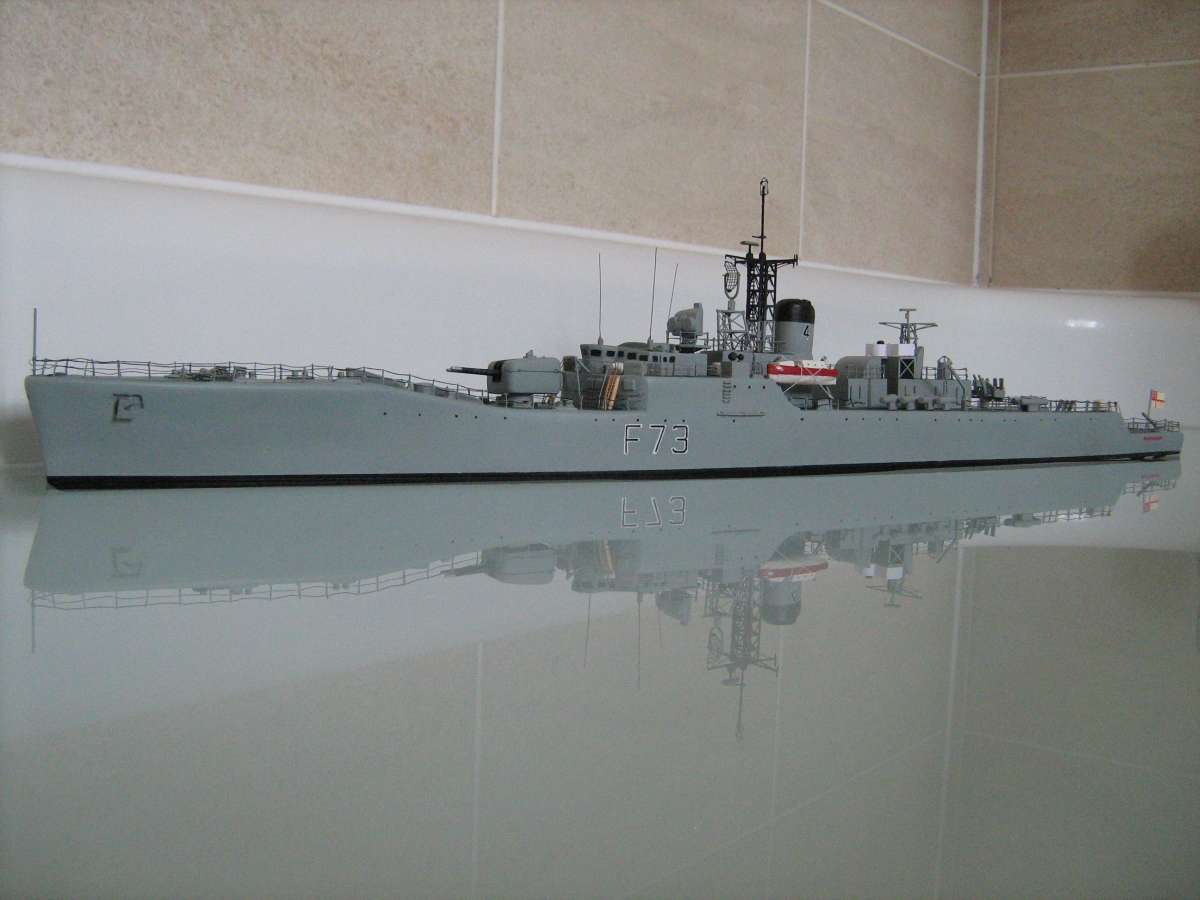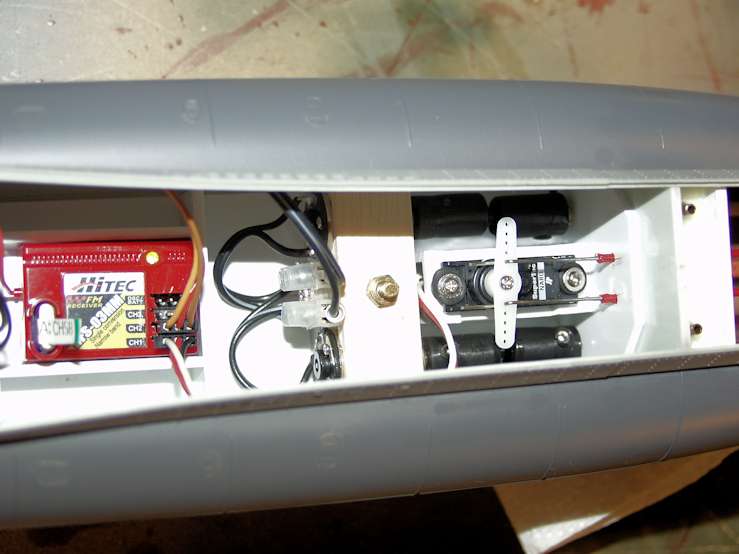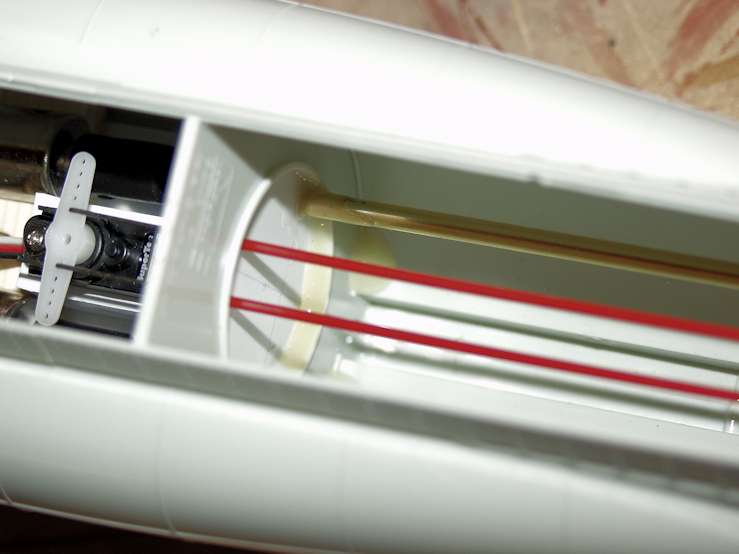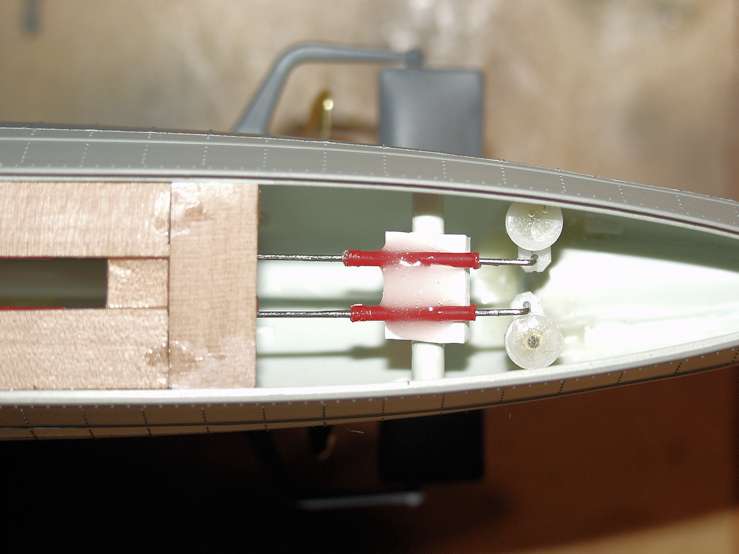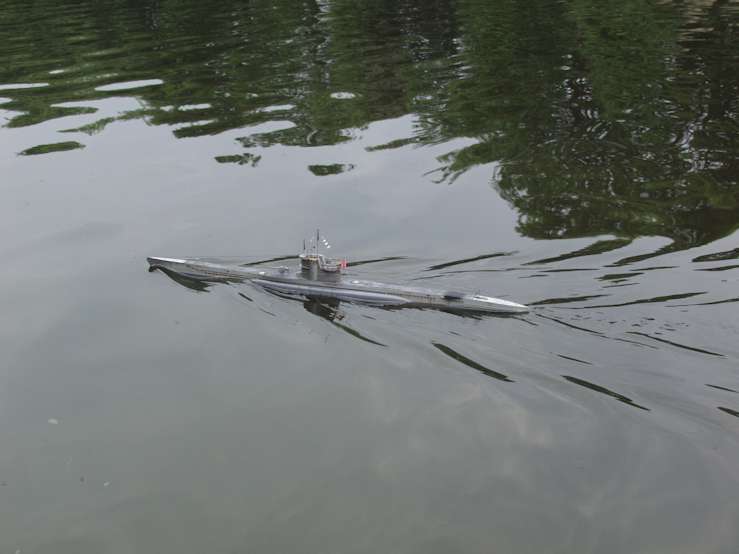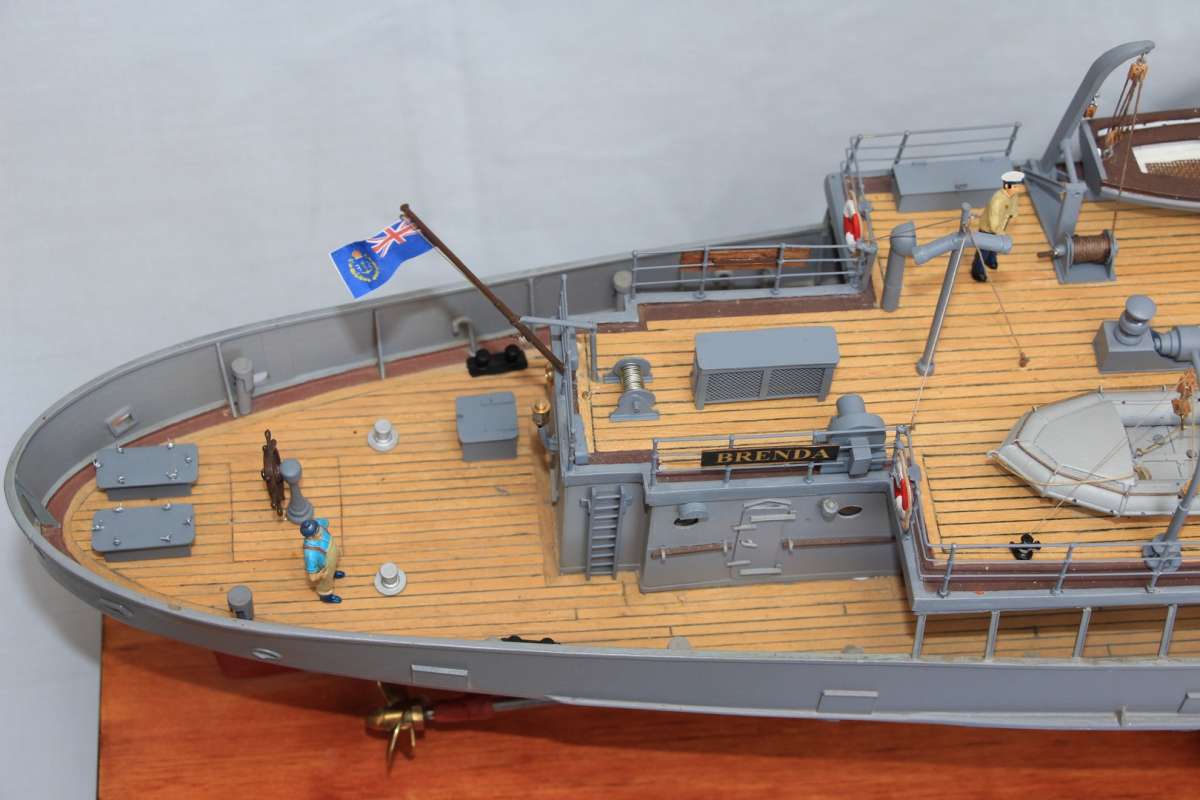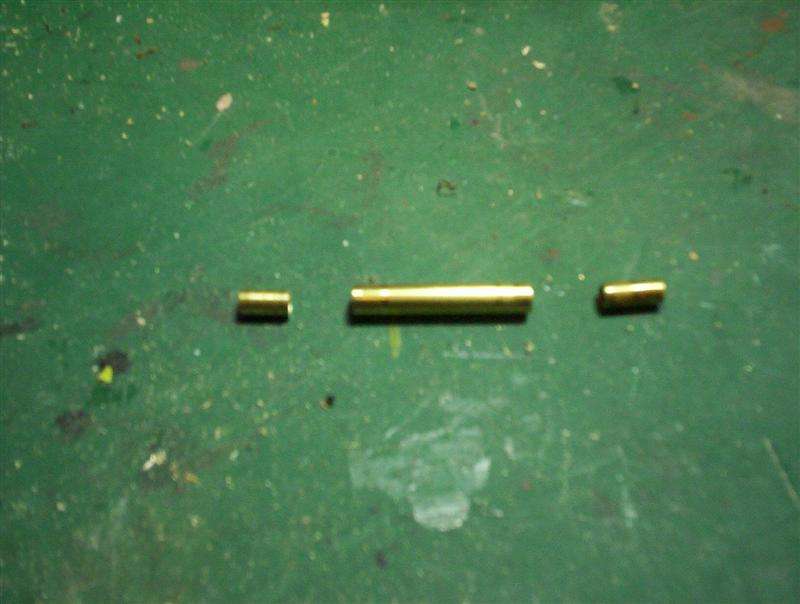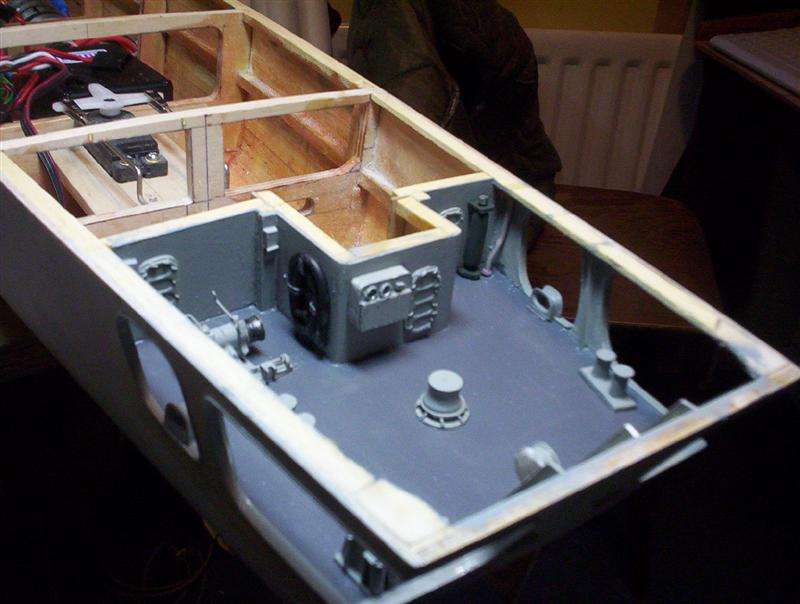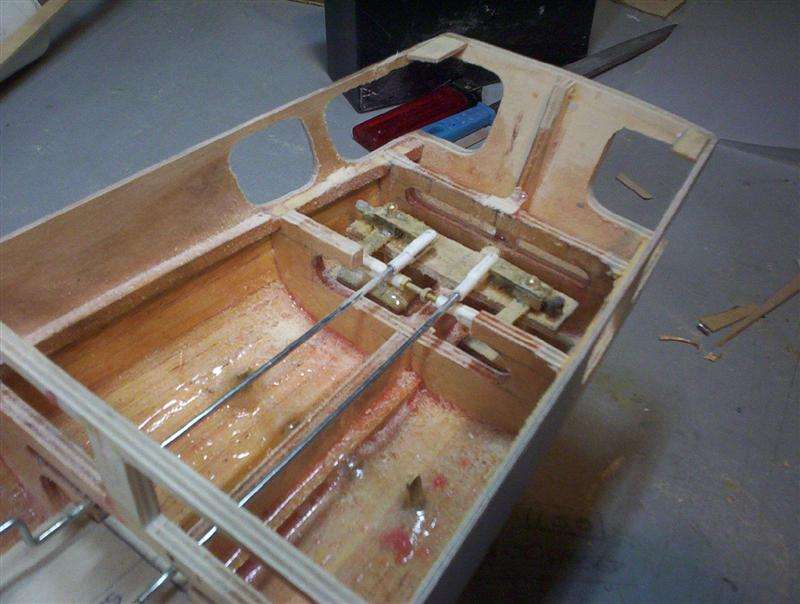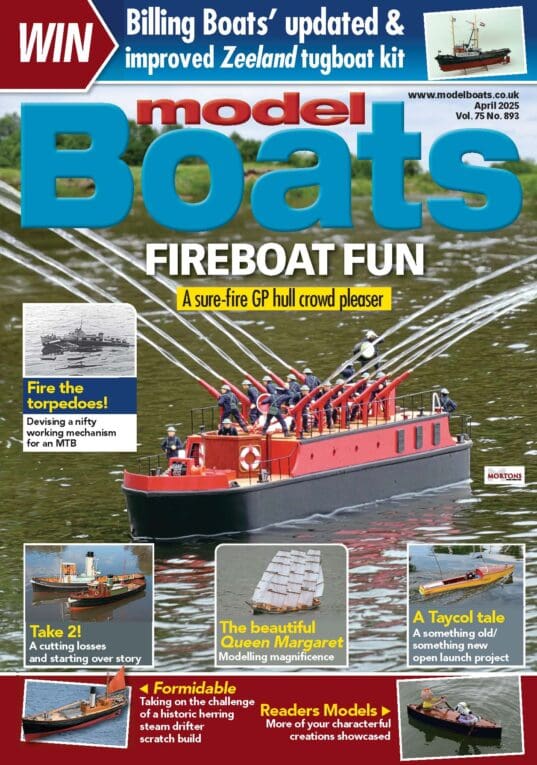https://www.modelboatmayhem.co.uk/forum/index.php?topic=65976.0
Hi there, if you have a look at the above link – don’t forget to see it properly, you will need to be a member of Mayhem, this is easily done.
The guy on here has used a lot of 3D printing to re-build this model of a Type 42; it may help you.
To go back though to your problem with the rudders, these are quite easily manufactured from brass tube, as you are thinking; for the rudder tube & brass bar for the rudder post.
When I have made them, I tend to used 2 different diameter tubes; one tube fitting inside the other. The 2 inner tubes are shorter in length, so that it creates a space in the inside the larger tube. This allows for this area to be filled with grease and therefore creating a seal on the rudder post, when in place.
As far as access, it would be possible to secretly put a hatch in the helicopter deck, where the roundel landing pad is and underneath that, on the quarter deck, where the capstan is located in that area you will be able to put an opening there through into the main hull which could quite easily be sealed.
Are you going to build the type 1 with the rounded stern and the type AKE-2 aerials more commonly known as the double bedspread aerials. I would like to see how this turns out for you – I know you can purchase pre-etched brass fittings for these aerials, but, I am unsure of the scale of them.
Last, but not least, are you going to build HMS Sheffield with the Micky Mouse ears on her funnel, cos I think that is one of the best lookers of this batch.
John
al mclauchlan.



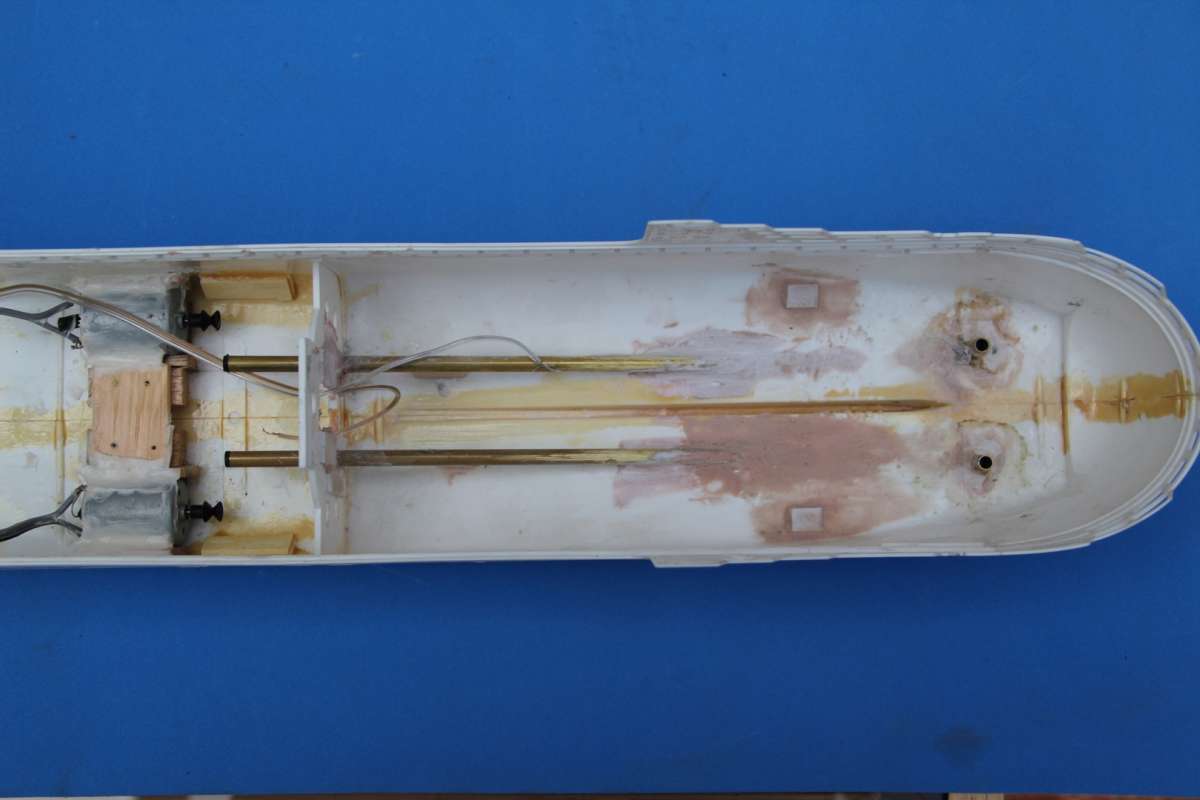

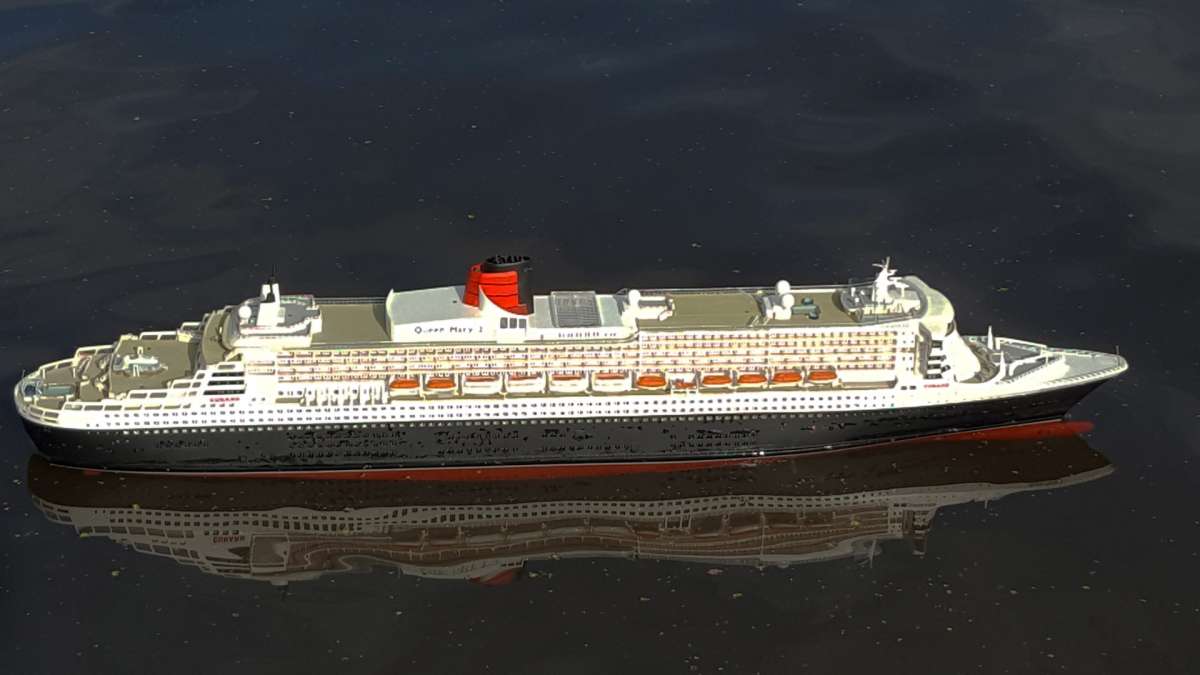
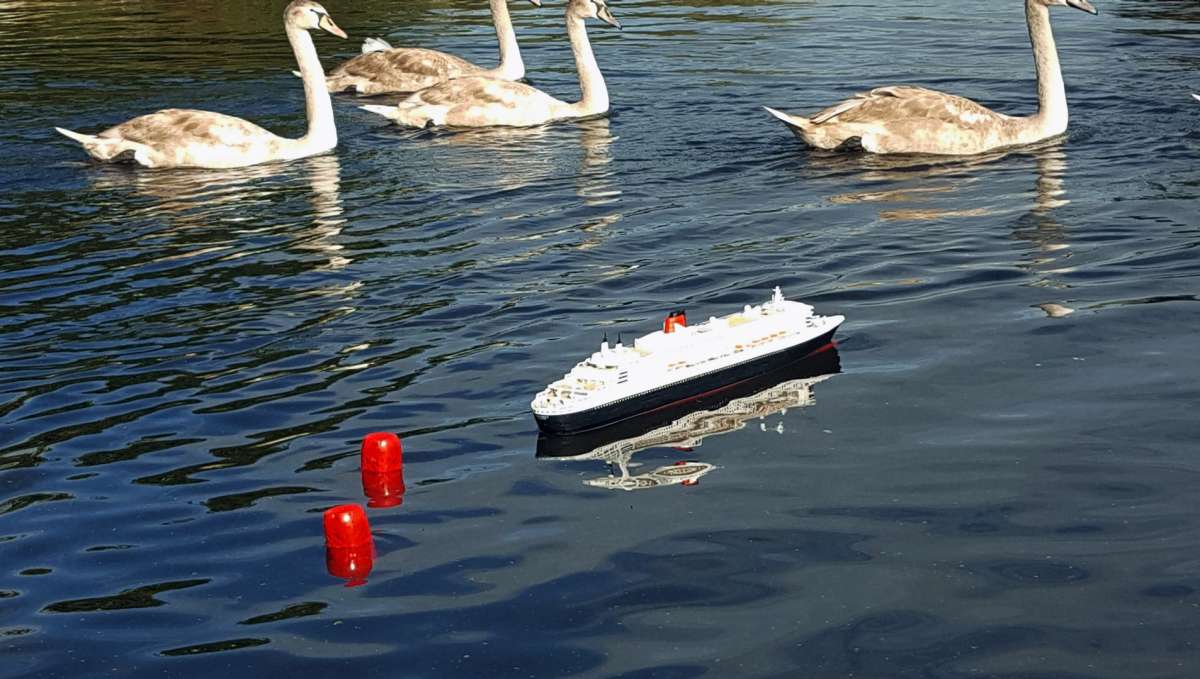
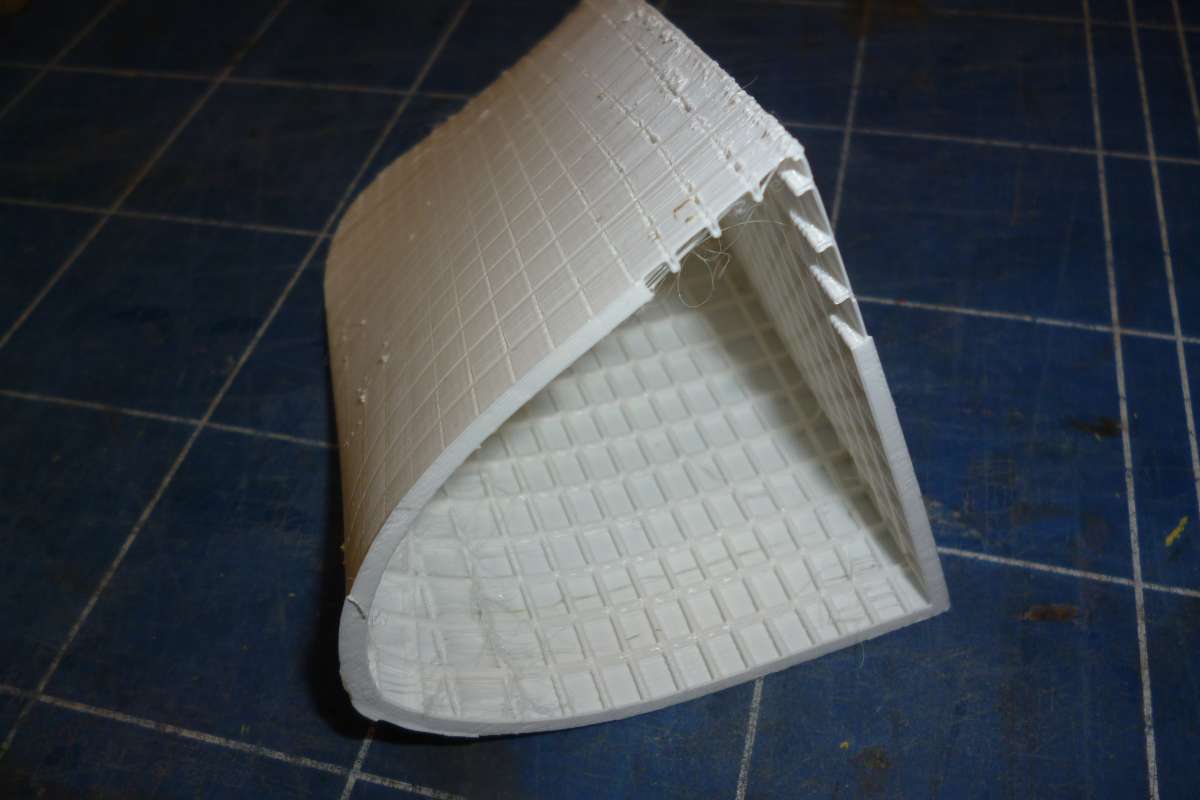
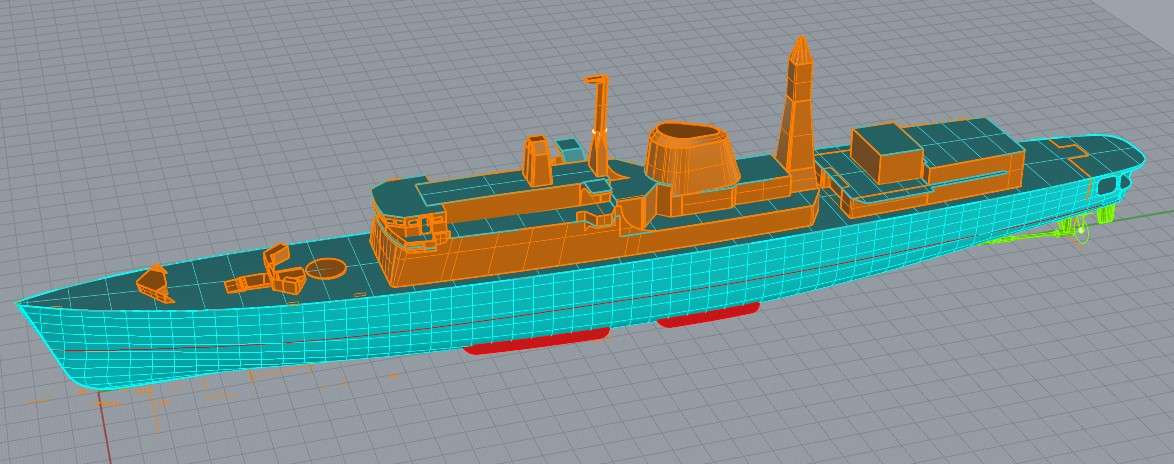
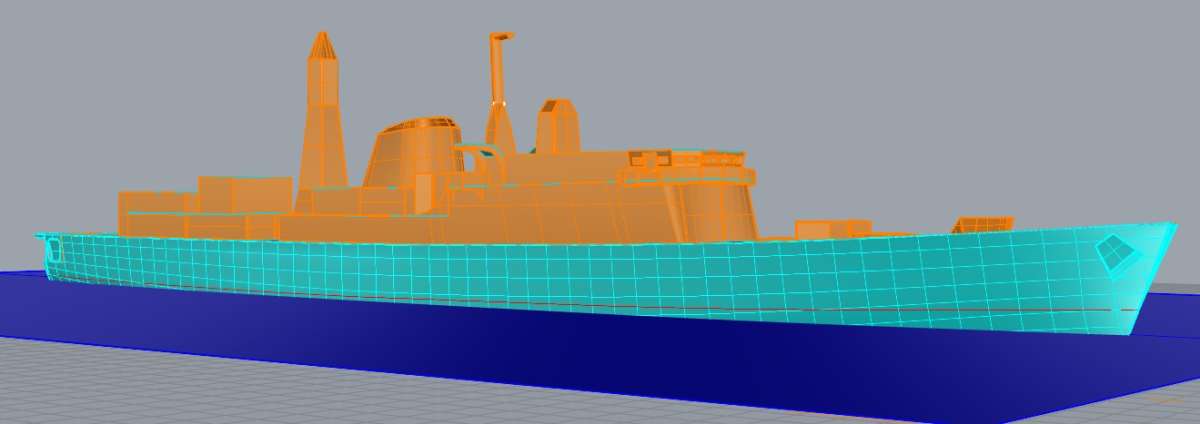


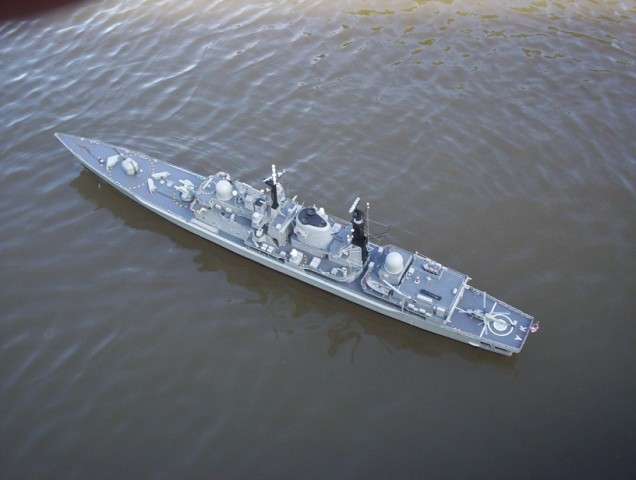
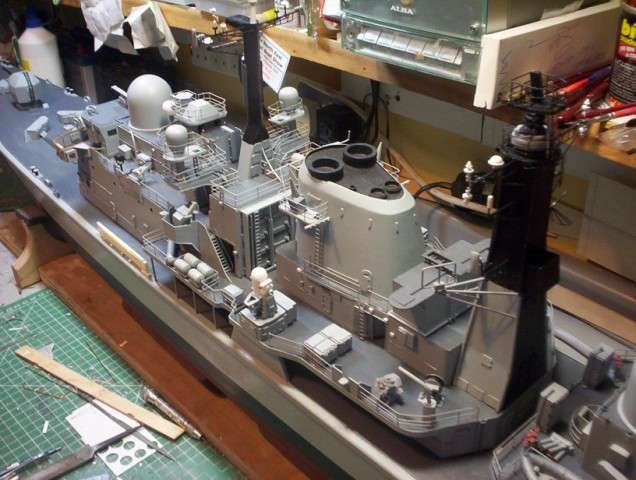 hi ya Al and welcome to the forum and model boats
hi ya Al and welcome to the forum and model boats